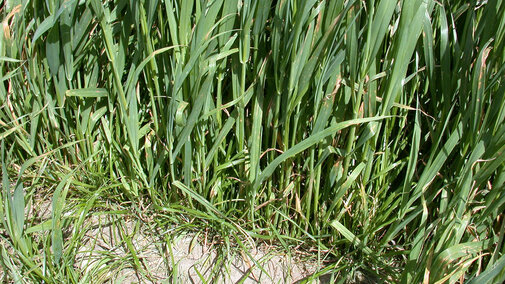Fall Dormancy in Alfalfa
The time for spring planting alfalfa is just around the corner and two traits often confused are fall dormancy and winter survival. Both are critical to a long lasting and productive stand. Today, let’s look at fall dormancy.
Fall dormancy is a measure of an alfalfa plant’s ability to regrow in the fall after harvest and spring following winter. It is scored on a scale ranging from 1 to 11, with 1 being most dormant and 11 the least. Higher dormancy means a harvested plant will focus its resources in the fall more on building reserves to survive the winter and less on new growth.
This tendency toward slower regrowth manifests throughout the year, with less dormant varieties typically recovering faster in the spring and producing overall higher yields. Another role dormancy plays is keeping plants from starting growth during the random warm-ups in the fall and winter months. Plants that break bud during these periods are subject to winterkill.
Finally, fall dormancy can impact the harvest timetable. Lower dormancy ratings means a plant regrows slower. This translates into more time to remove forage from the field before “windrow disease” and field traffic become a concern.
In the past, fall dormancy traits were linked with winter survival. With new varieties, this isn’t always the case, so fall dormancy needs to be evaluated on its own.
Variety selection depends upon your management, production goals and ability for a stand to make it through winter without sacrificing additional yield. If you have regular issues with stand winterkill, try a lower rated variety with improved dormancy. In Nebraska, we recommend dormancy ratings 1 through 5.
Oats and Italian Ryegrass for Pasture
Good quality pasture might be in short supply this spring. If you need some spring pasture, plant oats or a mix of oats and Italian ryegrass.
Spring-planted oats grow during spring when we are likely to receive rain and when moisture is used efficiently to produce forage. Oats can be grazed earlier than anything else you plant this spring. Once it gets five or six inches tall, which is usually about the third week of May, it quickly can shoot up to a foot tall in almost no time. Unfortunately, once oats get that tall it may not stool out, tiller and regrow after grazing very well. So, it’s important to start grazing early when oats get six to eight inches tall to stimulate it to form new tillers.
After this first grazing, keep oat regrowth between six and sixteen inches tall. Begin with a light stocking rate — about one animal every two acres. Then adjust animal numbers as oat growth changes.
For a longer grazing season, plant a mixture of oats and Italian ryegrass. Oats come on strong early, while Italian ryegrass tends to wait until June before it grows rapidly. Then it just keeps growing high quality leaves the rest of the season if moisture is available.
For straight oats, drill at least two bushels per acre in late March to early April. With good moisture and 40 to 60 pounds of nitrogen, oats can provide a couple months of grazing for one or two cows per acre. For extended grazing, drill oats plus around 15 to 20 pounds of Italian ryegrass per acre.

